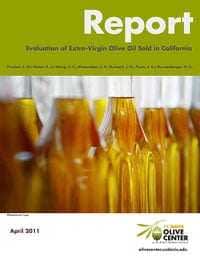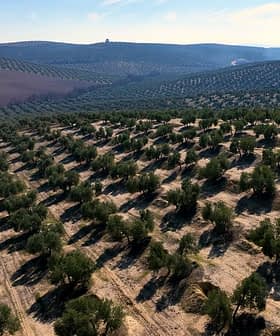In a redux of last Summer’s slamming of imported olive oils, the UC Davis Olive Center and the Australian Oils Research Laboratory have teamed up again to offer a critical assessment of the quality of some of America’s top-selling olive oil brands found on the supermarket shelves in California.
 Today’s report, Evaluation of Extra-Virgin Olive Oil Sold in California, shows researchers took into account at least some of the criticism of last year’s methods by drawing a much larger sampling of top-selling imported olive oils and using tests accredited by the International Olive Council.
Today’s report, Evaluation of Extra-Virgin Olive Oil Sold in California, shows researchers took into account at least some of the criticism of last year’s methods by drawing a much larger sampling of top-selling imported olive oils and using tests accredited by the International Olive Council.
The imported olive oils tested were Colavita, Star, Bertolli, Filippo Berio, Pompeian and a premium brand, Lucini. They were compared to California Olive Ranch (COR) and Cobram Estate — the largest American and Australian olive oil producers.
The report concluded “laboratory tests found that the top-selling imported brands of ‘extra virgin’ olive oil sold in the United States and purchased at retail locations throughout California often failed the IOC’s sensory standards for extra virgin olive oil.”
It wasn’t all good news for Australia and California, though. Eleven percent of the Californian, and all of the Australian olive oils failed the “PPP” (pyropheophytine) tests which indicated they were exposed to heat and light or adulterated with refined oils. In a statement on the California Olive Ranch website, Vice President of Marketing Claude S. Weiller expressed disappointment that two COR bottles failed the PPP test. “Our investment in technology that allows us to identify the olives used to make our oil should help us understand what happened to the two bottles that didn’t pass muster”, he wrote.
The study was conducted by the University of California at Davis’ Olive Center which is supported by the California Olive Oil Council, whose members stand to gain from the discrediting of imported olive oil. California olive oil producers provide about one percent of the olive oil consumed in the United States, but they are developing the capacity to supply much more than that.
It’s the latest chapter in what has become a contentious industry, increasingly divided into New and Old World producers pursuing an advantage to capture more of Americans’ growing appetite for olive oil.
See also: Olive Council Issues Harsh Response to Second Davis Study of Imported Olive Oils
Click here to view the PDF.








